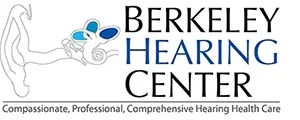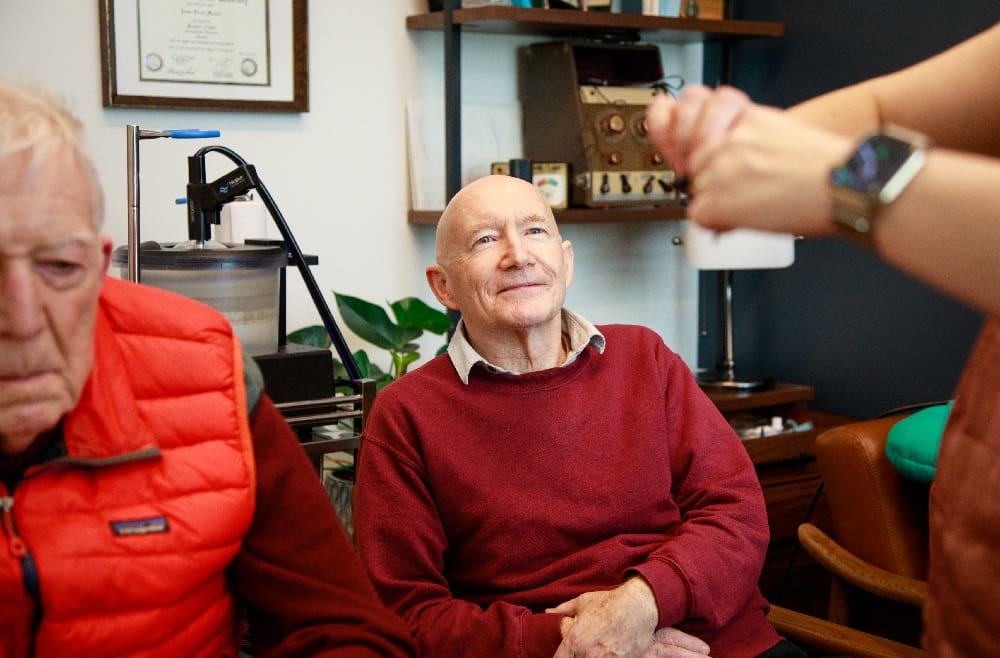2024-11-04
Jonathan Lipschutz Audiologist, M.S., F-AAA, Co-Owner
Apple recently released what they’re calling “the world’s first all-in-one hearing health experience”--hearing test, active noise cancelling and “clinical-grade Hearing Aid capability”–utilizing their AirPods Pro 2. As promised, here’s my experience as a person with hearing loss who also happens to be a hearing healthcare expert. I’m going to reference/relate to last month’s article on how Audiologists fit prescription hearing devices (PHDs) using “best practices”, with myself as the ‘guinea pig’. For this review, I’m assuming users are comfortable with the ‘technology’. For people like my parents, G-d bless them, all bets are off.
The first part of Apple’s ‘hearing health experience’, and the only way to begin using them for hearing assistance, is a very basic tonal threshold test. Apple claims the test “simulate(s) the conditions needed…to evaluate your hearing”. Of course, a full diagnostic audiological hearing evaluation encompasses far more than a basic ‘threshold’ estimate. Given that rather large caveat, the ‘test’ was effectively accurate except at the highest frequency tested (8kHz) with Apple indicating poorer hearing than my actual clinical threshold test.
Over-the-counter (OTC) hearing devices are strictly for nerve hearing loss up to moderate level. More severe hearing loss requires PHDs. For my own edification, I ‘faked’ a more severe hearing loss, with Apple correctly indicating I should see an “Audiologist”. The test was guided & easy to complete. For me, no complaints here.
But as last month’s article notes, best practice requires visual observation of the ear canal/eardrum to assess for medical problems (or even just earwax) causing/contributing to the loss. Audiologically, I have an issue with the lack of this. In the future, maybe Apple could add some sort of camera/sensor to address this.
There are 4 earbud sizes to choose from for devices. There’s no guide though, so the user has to guess which one is ‘appropriate’. Before the ‘hearing test’ began, to ensure a good sound seal for testing, the software interacted with the devices to assess acoustic fit. This is critical for accurate testing and for obtaining proper amplification when using them as hearing devices. Comfort is critical, as hearing devices need to be worn all day to achieve their therapeutic effect. Personally, I didn’t find them super comfortable, and I certainly wouldn’t want to wear them all day! They also blocked my ears for certain frequencies, creating an unnatural hearing loss where my hearing is normal. Interestingly, I also found myself needing to ‘equalize’ the pressure in my ears, similar to when I fly. Physical fit may be an issue for folks. Not unexpected (or unpredicted) honestly.
How were they as hearing devices though? For this, I had my colleague utilize probe microphone/real-ear measurements (REM) to assess the amplification ‘prescribed’ for my degree of loss. They provided appropriate amplification for only soft inputs in the high frequencies, where I have hearing loss. But as noted above, they blocked lower frequencies where my hearing is normal. As hearing devices, I found them lacking, and the REM backed that assessment up. There are a few simple adjustments that can be made to ‘hearing mode’ in the Settings, but none of them significantly improved the deficiencies noted above.
The one feature of Apple’s “hearing health experience” I found quite effective was the active noise cancelling. It really made a difference when I wanted to ‘isolate’ from the surrounding environment, so kudos for that feature.
We’re fully behind the OTC option for folks who are appropriate candidates. However, it’s critical to understand that amplification is the only treatment for nerve hearing loss, with a minimum of 8-10 hours/day needed to achieve the therapeutic effect. The final nail, in my opinion, is their battery life.
Apart from the comfort issue, I could not use them as hearing devices for more than about 6 hours, even less when I also did some audio streaming.
My two sense (sorry, couldn’t help myself), while a step in the right direction, Apple needs to make some significant hardware/software changes in the future if they are serious about their “hearing health experience”.
Wishing everyone a blessed Holidays, and remember to always support our local community businesses!
https://berkeleyhearing.com/wp-content/uploads/2024/11/Need-hearing-help.jpg
Jonathan Lipschutz Audiologist, M.S., F-AAA, Co-Owner






